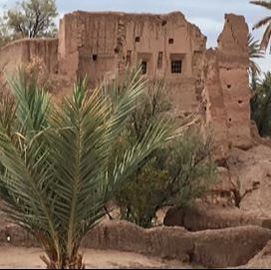 I'm back from Morocco and excited to jump back into the market once again. I'd like to say I missed you all, but I really needed the time off and enjoyed the trip immensely. (It was long overdue; just ask my husband, Cliff.) Still, while I've been in the desert (yes, I rode a camel), Jill has been preparing our new listing in Crocker Highlands, debuting this Sunday, so work continued unabated as I checked in sporadically from Africa. That's both the beauty and the curse of smart phones; they travel everywhere we go! (Ugh.) As expected, Morocco is a country full of history, sights, sounds, flavors, senses, divergent cultural experiences, and brown houses. . . (I'm not kidding, they're ALL brown, except in Marrakesh where they are all pink.) Given that the local building material is mud, it makes practical sense that homes in Morocco would be built almost entirely from straw and clay; the source material is abundant and easy to come by. Simply dig a hole, add some straw and water, mold the bricks, allow to dry, and BINGO, you're own Moroccan Lego blocks!
Unfortunately, this earthen material has a limited-life span and begins to deteriorate in the space of 40 years or so, which is why it was NOT an uncommon site to see a fairly new structure standing next to a completely abandoned one. If you're counting on straw and mud to keep your house standing, turns out, it's not a great long-term strategy. (Morocco doesn't have the stringent building codes we have here in the USA, nor is there a resale value to these melting structures.) This gives a whole new meaning to the word "settlement." Fortunately, mud homes are not the norm here in the Bay Area where our framing materials often consist of steel, concrete and wood. Even so, it's not uncommon for me to receive calls from prospective Sellers asking that I list a home that's been deteriorating for quite some time. Why have these homes been ignored? Top culprits include age, cost of repairs, lack of due diligence, a failure to note deteriorating issues, deferred maintenance, or an overall disinterest in improving a home after a certain point in time. In short, maintaining a property not only requires some working knowledge of the individual and collective components, but implies an added expense as well. Which is why Real Estate and insurance experts alike suggest Homeowners create an annual budget for the expected - or unexpected - repairs that are part and parcel of home ownership. But for Sellers who've often times inherited one of these "diamonds in the rough" from deceased relatives, the question often becomes: "Are we better off spending money to improve the house prior to bringing it to market, or should we sell it now, 'AS IS'?" (One technical note: ALL homes are sold "as is," as they cannot be sold "as was," or "as they shall be," thus "AS IS" descriptions are an emotional line in the sand - not a legal one.) With respect to shifting sands (and we witnessed those in the Sahara as well), the decision to prep a home, or not, depends on several variables:
Once these questions are answered, the conclusion usually becomes quite clear, but whatever you decide is the best course of action for you and yours, I'm here to help. Whether its a stem-to-stern makeover, a smaller cosmetic lift, or a "CLEAR IT, CLEAN IT & SELL IT!" trajectory that we've adopted, together, we can accomplish the task with good intentions and relative ease. Whatever you decide, the goal is to achieve the objective as seamlessly as possible. Hey, if I can ride a camel in the Sahara, getting your home ready for the market is a relative cake walk by comparison. (Camels are a bumpy ride. Selling your home shouldn't be.) How can I help you?
0 Comments
Your comment will be posted after it is approved.
Leave a Reply. |
AuthorJulie Gardner, has been writing The Perspective for 18 years and has published more than 750 humorous but always informative, essays on life and real estate. Categories
All
|

 RSS Feed
RSS Feed
